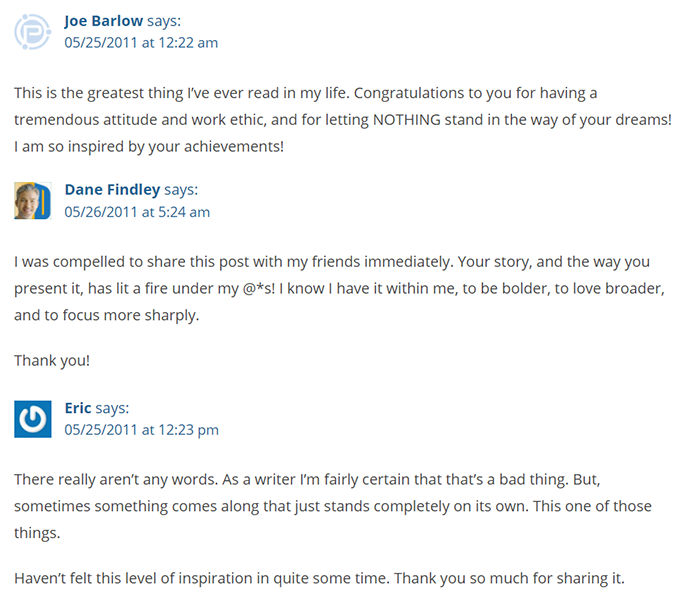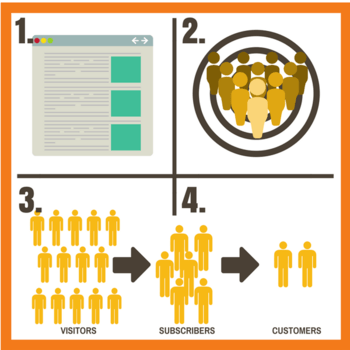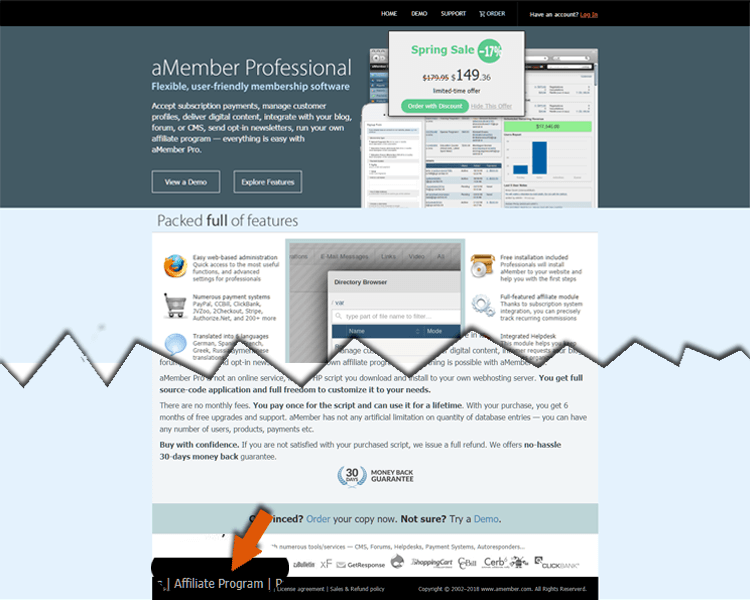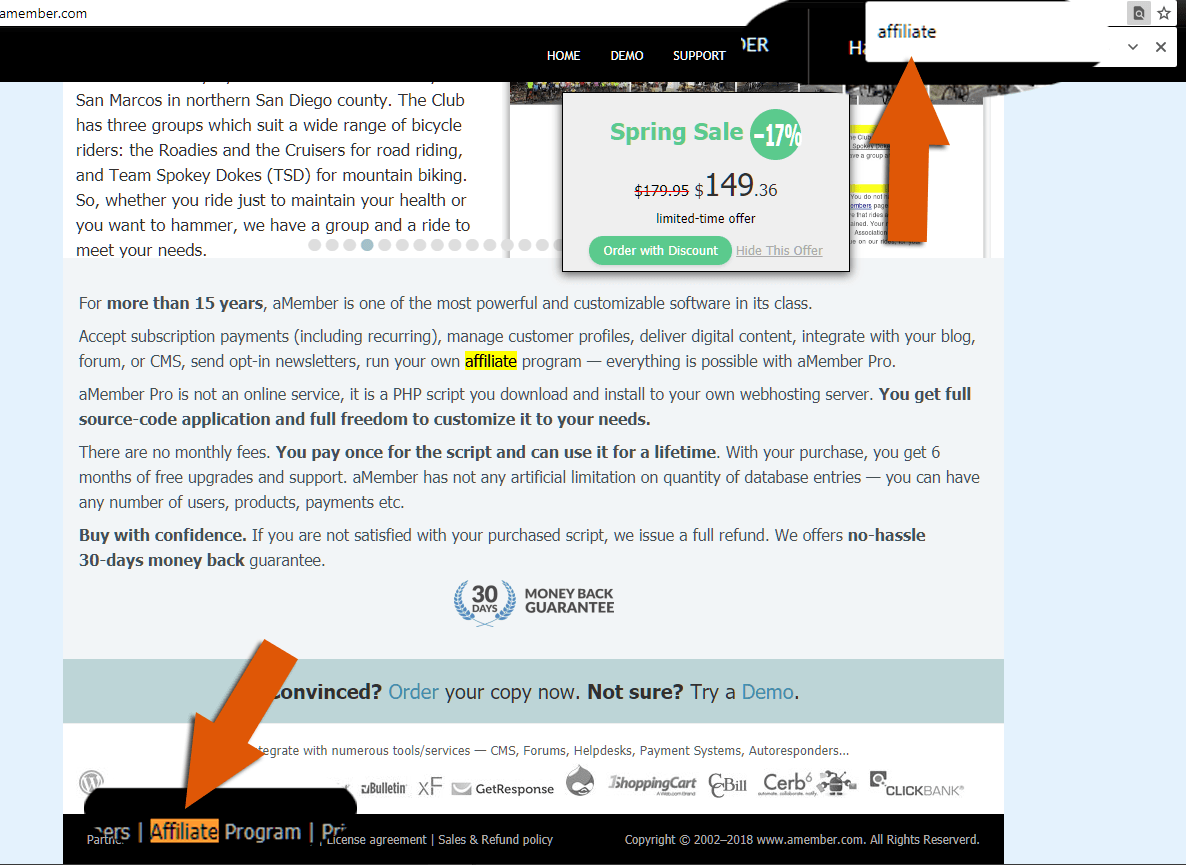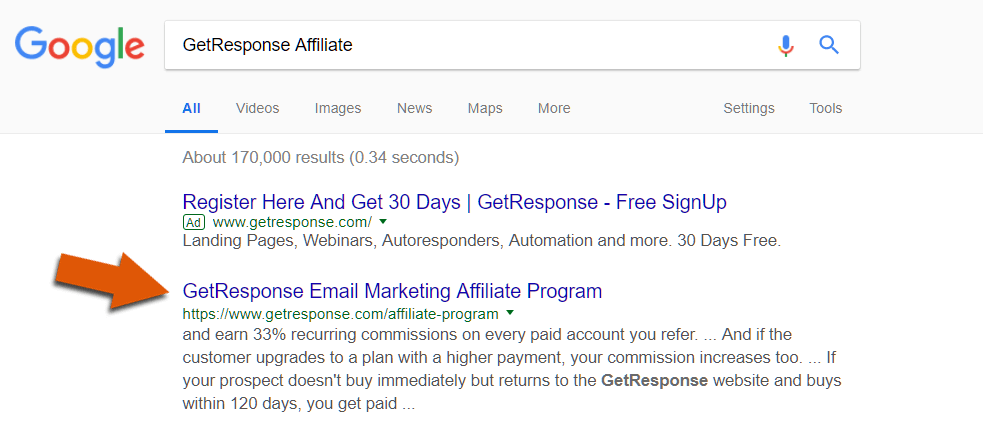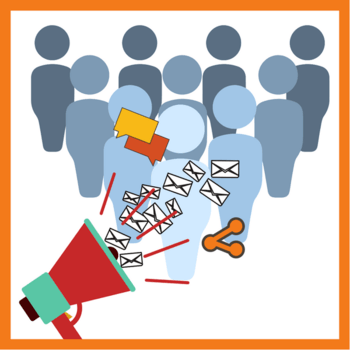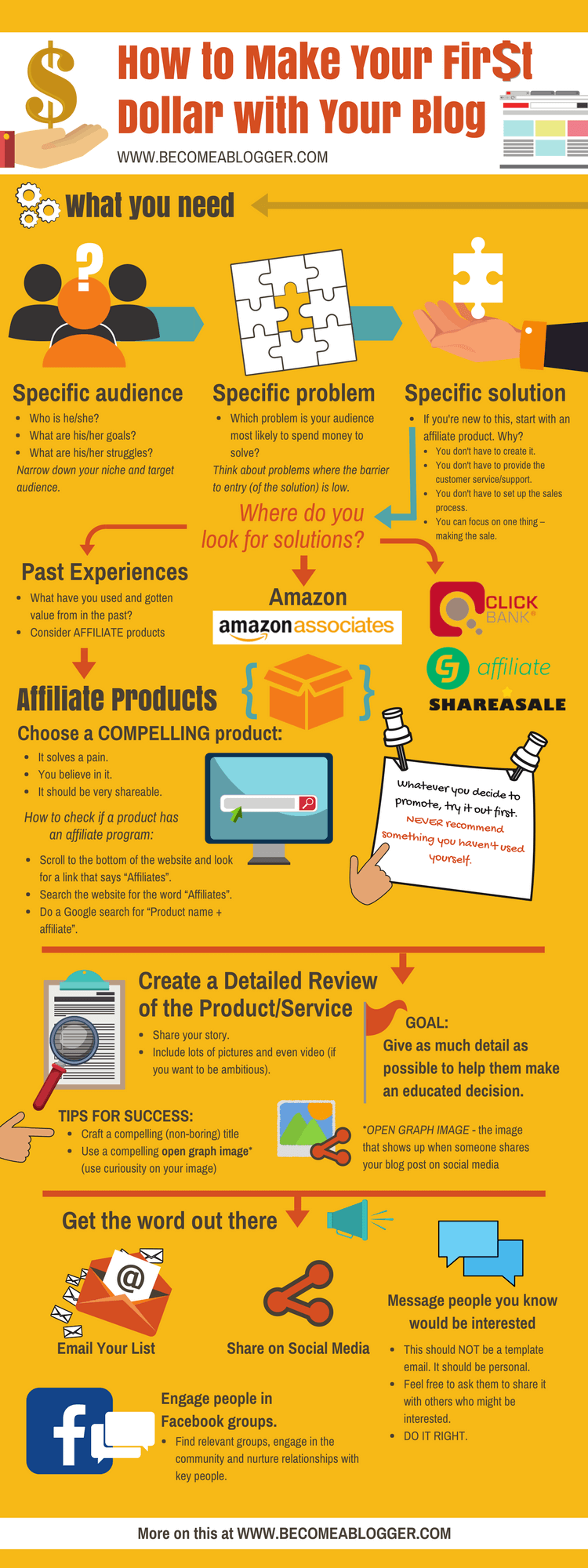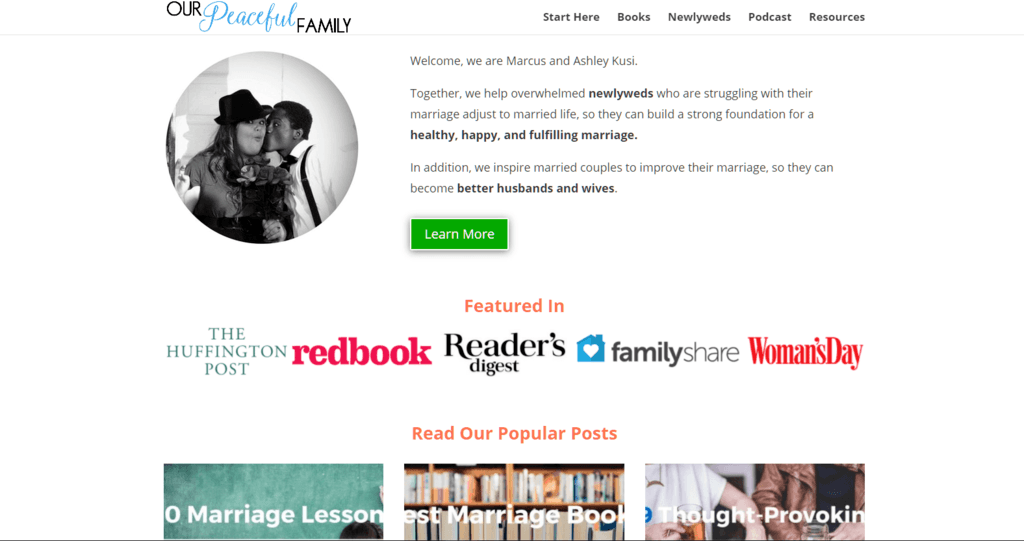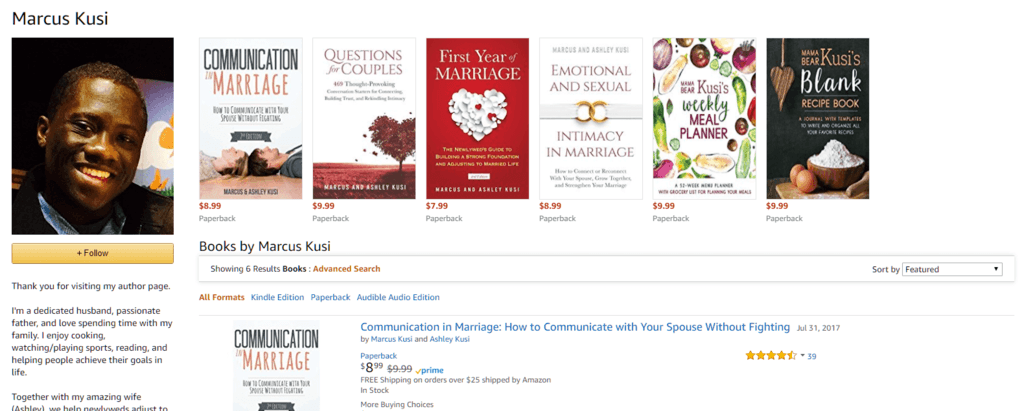
Sounds dreamy, doesn’t it?
Not just making $10K/month, which would be awesome all by itself, but making $10K/month on autopilot.
My guess is that this dream has tickled your brain once or twice.
The good news is that you can make it a reality. The bad news is that this takes time.
But that doesn’t mean you can’t start making money from your blog right now.
You won’t earn $10K/month right from the start, but you can earn something. You just have to learn how to sell. You have to learn how to persuade strangers to take out their credit cards and buy your products and/or services.
And who better to learn from than Jon Morrow himself?
After all, he’s the guy who wrote the emails mentioned in the headline — the ones that make $10K/month on autopilot.
How This Blog Makes $10K/Month from Selling a Single Course
Jon has created several courses over the years, but the one we’ll take a look at is his GuestBlogging course.
How does he sell it?
Through an automated email sequence.
People who subscribe to his email list get a sequence of emails that builds Jon’s authority, builds trust with his readers, and builds a desire for his course.
And boy, does it succeed. Just look at this screenshot from his earnings the last few months:
Today I’ll take you through his email sequence and reveal the persuasion techniques he uses to earn over $10K each month. (If you want to read the full email sequence, sign up here.)
Technique #1: Use Dreams to Pique Interest in Their Inbox
The first step to persuading your subscribers to buy your product is to persuade them to open your emails. The best way to do so is by invoking their dreams.
Jon’s course is aimed at aspiring writers, and he knows their dream is to be featured in big magazines or newspapers. They dream about becoming highly sought-after writers.
So using that exact subject line hits right on one of their deepest dreams and desires.
But subject lines aren’t the only place you want to do this. Jon does it again in the body of the email:
The aspiring writer would love to have everyone approach them for book deals, columnist positions and hundreds of writing gigs. Jon positions himself as the person to whom they should listen if they want a taste of the same delicious success.
Technique #2: Build Credibility Without Sounding Like A Pompous Ass
Here, Jon builds credibility by suggesting Forbes (i.e. the 82nd most popular website in the U.S.) approached him to write an article for them. And not just that — he had to turn them down because he was booked solid.
That’s some serious bragging rights. It builds instant credibility.
But because Jon doesn’t want to sound like a pompous ass, he adds a line about being flattered. It shows humility.
He does it again later in the email:
It feels strange to say that, by the way. I always wanted to touch a lot of people with my work, but I never figured just one article would reach more than a million people.
Again, Jon builds credibility, but he immediately humanizes himself afterwards.
Yes, his article reached one million visitors, but he’s still as amazed by that as you would be.
He shows he’s not superhuman, and that if he could do it, you can too.
Technique #3: Make Them Self-Qualify as Your Perfect Customer
Any beginning writer who reads this will nod their head and think, “That’s me!”
This is qualification in action. By describing his audience, Jon makes them feel like he’s talking about them. It signals that they should pay attention to what Jon has to say.
But that’s not all.
It also starts them down the path of potentially buying something. After all, his product is for beginning writers, so by nodding along to these statements his readers pre-qualify themselves for his offer when he sends it.
Technique #4: Pinpoint Their Most Pressing Problem
Nobody tells you. Like it’s some big secret or something.
Jon points out a big problem his writer audience has: They want their articles to go viral so they become more prolific, but nobody tells them how to do it.
If your reader is struggling with this problem, you agitate their frustration and fuel their desire to see it fixed.
When you pinpoint a problem they’re struggling with, you capture their attention because it suggests you’ll have a solution.
And lo and behold, Jon does:
So, I’ve decided to do something about it.
I’m releasing a case study of how I wrote and promoted the article that got over 1 million visitors. I’ll send it to you in pieces over the next few days.
Technique #5: Use the Power of Subtle Implication
You might not see it at first, but Jon sends several messages to his audience besides, “You’re getting something for free.”
He also implies that: a) the case study he’s giving away is valuable, and b) that he’s a generous person.
These subtle implications change the way his readers view his case study and him. Two lines are all it takes to build a more positive picture in the reader’s’ mind of who Jon is.
Implying positive attributes about yourself or your product works better than outright stating them.
Technique #6: Tell Them Exactly What’s Coming
Sound like a good deal?
In Jon’s emails he consistently sets expectations so his readers know what’s coming.
When people read this, they know they can expect more emails that break everything down. This boosts the chances that his next emails will get opened and read.
He does it again at the end of his email, where he gets more explicit:
Here, he tells the reader the specific email subject line to expect.
And when that email arrives, his readers will recognize it, which will make them more likely to open it.
Technique #7: Leverage Other People’s Praise with Pride
Don’t just read it. Read some of the comments too.
There are hundreds of them. The site eventually got so overwhelmed with moderating them all that they shut the comment section down.
Jon doesn’t stop at telling people to read his viral posts, which will already boost his credibility. He also tells his subscribers to read the comments.
And when they do, they’ll read a ton of comments like these:
If he still had readers with any doubt that Jon knows what he’s talking about when it comes to viral posts, comments like these squash them all.
Jon builds credibility and authority by letting other people do the talking for him.
Are there awards, accolades, blog posts, videos, or third-party ratings that you can show your audience?
If so, use them and watch your persuasion and influence increase with every email you send.
Technique #8: Set Yourself Apart from the “Bad Guys”
A lot of people like to brag about their traffic. Especially guys. If they write a popular post, they strut around like peacocks, feeling superior to everyone.
But that’s a bunch of crap.
Traffic isn’t about giving yourself an ego boost. It’s about changing people’s lives.
Jon puts himself on the side of his readers here by setting himself apart from the braggers and from the people who fake their success online.
He creates a “bad guy” — an enemy he shares with his readers — and he positions himself as the antidote to that, as the guy who shares his readers’ values, and who cares about their lives.
Think of ways that make you different from so-called “gurus” who lead your readers astray. How are they hurting your readers? What information do they give that’s broken?
Look for opportunities to show people what makes you different and you’ll make a lasting impression.
Technique #9: Give Your Emails a Hint of Intrigue
It’s advanced. Very advanced.
Not just difficult. It’s the equivalent of an Olympic athlete running a four minute mile.
Here, Jon cleverly teases the lesson he’s about to share in this email.
Rather than tell them outright what he has in store for them, he builds it up as something special. Few will be able to resist clicking his link.
Why?
Because Jon has intrigued them. He has created a question in the reader’s mind that has to be answered: “What Jedi-level writing trick is Jon about to share?”
Continually building intrigue like this keeps reader engaged throughout your email sequence.
Technique #10: Be Their Reassuring Voice
Click here to get the lesson.
People are self-conscious, and when learning new things, they can feel overwhelmed. They may feel like they’re not ready yet to implement your advice.
It’s your job to reassure them and make them feel confident that they can.
That’s what Jon does in this excerpt. He tells his readers he’s about to share an advanced lesson, which builds intrigue, but many people may feel like they’re not ready for advanced lessons.
Then he reassures them that, even if they don’t apply it 100% perfectly, they will still see a major improvement in their writing.
Your readers need to feel like your advice or your product will be helpful to them, and that it won’t be too hard for them to apply. They will be more eager to discover your advice.
Technique #11: Make Them Wait with Bated Breath
It’s counterintuitive, though. For instance…did you think posts go viral because readers share them?
Wrong. Shares from readers are a byproduct of the strategy I’m about to teach you, not the cause.
Want to learn the cause?
Open my email tomorrow. 🙂
As mentioned previously, Jon continuously sets expectations for his next emails so readers know they’re coming. But here, he takes it a step further by leaving his readers with a cliffhanger. He leaves questions in his readers’ minds, the answers to which they can only get by reading his next email.
This creates enormous anticipation.
Using cliffhangers is a powerful way to get your email series read consistently.
And the more of your email series someone reads, the more they’ll see you as an authority, and the more likely they are to buy your offer.
Technique #12: Bond Through Relatable Tales
But I had an idea.
In one of his emails, Jon shares a story about how his family was poor, and how his parents struggled to put food on the table due to staggering medical bills.
He explains how he felt guilty and wanted to pitch in, how he earned his first dollars, and finally, how he learned a few valuable lessons about making money from his writing.
This story creates a powerful bond between the reader and Jon. He makes the reader feel like they know him, and like they can relate to him.
The stronger a bond you can create with your readers, the more they will trust you, and the more likely they are to buy from you.
Technique #13: Call Out Their Bullshit
But when it comes to promoting our writing? Or even worse, asking for money?
We feel ashamed. Dirty. Afraid. So, most of us never promote our work at all.
Jon boldly calls out his readers’ bullshit that keeps them from achieving financial success.
He knows many of his readers have all sorts of hangups about promoting or selling their work, and he convinces them they had better get over them if they want to succeed.
If you want to succeed as a writer, you have to be brave. You have to fight for your work.
[ … ] if you’re willing to do the work [of promotion], you’ll be shocked at what will happen.
Truths like this can be painful, but relevant.
Jon doesn’t intend to wound people’s egos and then abandon them. Instead, he squashes the mindset that it’s shameful to promote your work, while handing out a new mindset to adopt — you have to fight for your work.
If you can be the person who calls your readers on their bullshit, do it. If you can reshape the way they see themselves and the world, they’ll have already opened themselves up to your influence.
Technique #14: Encourage Courage
With this line, Jon inspires you to be courageous. He inspires you to fight for your work.
Inspiring courage is an effective way of getting readers to follow your lead. When you inspire courage in your readers, you inspire them to see triumph down the line — triumph that they want to see in their own lives.
When you ignite these feelings in your readers, they’ll open themselves to your influence, because they’ll see you as the person that will take them to that triumph.
Technique #15: Use the “Gain, Logic and Fear Trifecta”
Once you complete the class, I even give you a certification you can show the big magazines and blogs to prove you know what you’re doing. It’s a huge advantage.
In the last three emails of his sequence, Jon uses a three-part persuasion tactic known as the “Gain, Logic and Fear Trifecta.”
It works like this:
First, you show the readers what they’ll gain from buying your product or service. Then you give them a logical reason for why they should buy your products. And lastly, you tap into their fear to make them want your product now.
Using these three angles together is immensely persuasive.
In the example above, Jon accomplishes the first step. Immediately the readers knows what they’ll gain — Jon’s insider knowledge of writing for big sites, which they can use to get published there themselves, and a certification that proves they took the course.
That’s persuasive on its own, but in his next email, Jon ups the ante:
On an average day, you might get 50 different pitches from writers you’ve never met before. Well, who are you going to pay most attention to?
- A complete stranger pitching you out of the blue
- A professional writer certified by the most prestigious training program online
Whose pitch are you going to read first?
Here, Jon taps into his readers’ logical side of their brain. He has them imagine two scenarios and deduce which one would win. The answer seems obvious, doesn’t it?
Some readers need a logical justification like this to help them make their decision.
But Jon doesn’t stop there. In his last email, he uses his readers’ fear of missing out to persuade any last indecisive readers:
Click here to get your $100 discount before it expires
Not trying to be pushy. Just want to make sure you don’t end up having to pay full price for this. That would suck. 🙂
He gives them that extra bump they need to decide they want to buy his course and that they better do it before their discount expires.
As you can see, mixing gain, logic and fear makes for an effective persuasion bomb.
Steal These Persuasion Techniques and Boost Your Sales
If you want to sell products or services to your readers, you must learn the art of persuasion.
You must persuade your readers that your product or service is worth the investment. You must persuade them you’ll fix their most pressing problems. You must persuade them to trust that you’ll deliver.
Jon’s emails are a great example of persuasion in action. You can steal his techniques and use them in your own emails.
And who knows, maybe one day you’ll have an email sequence that makes you $10K/month as well.
Doesn’t that sound dreamy?
The post 15 Persuasion Techniques Stolen from Emails That Make $10K/Month on Autopilot appeared first on Smart Blogger.
from
https://smartblogger.com/persuasion-techniques/

